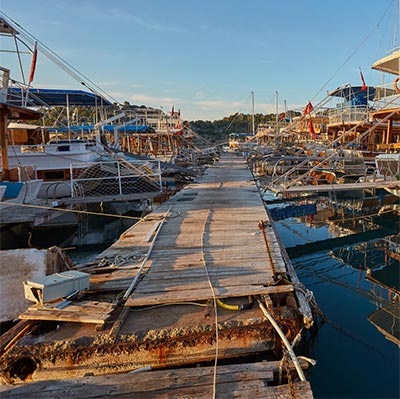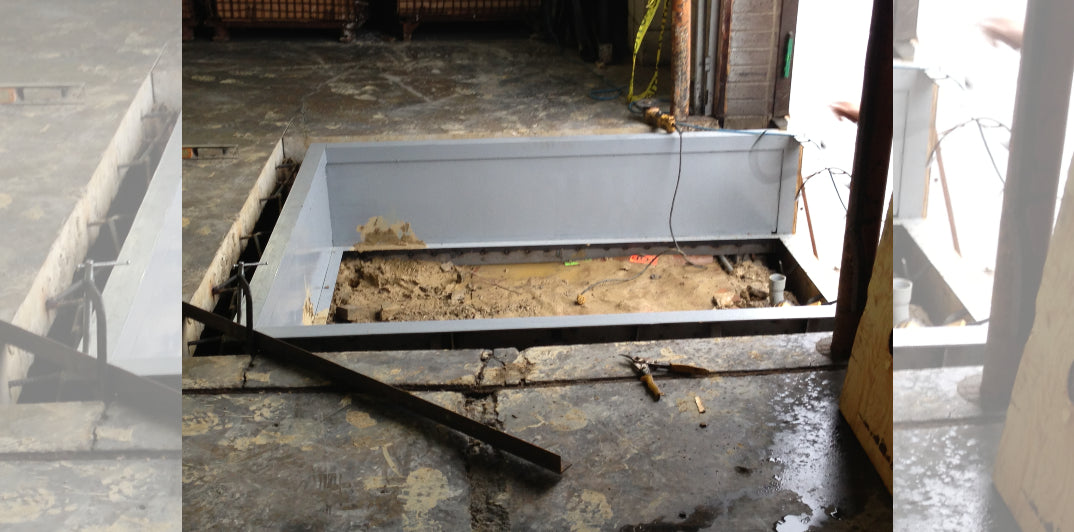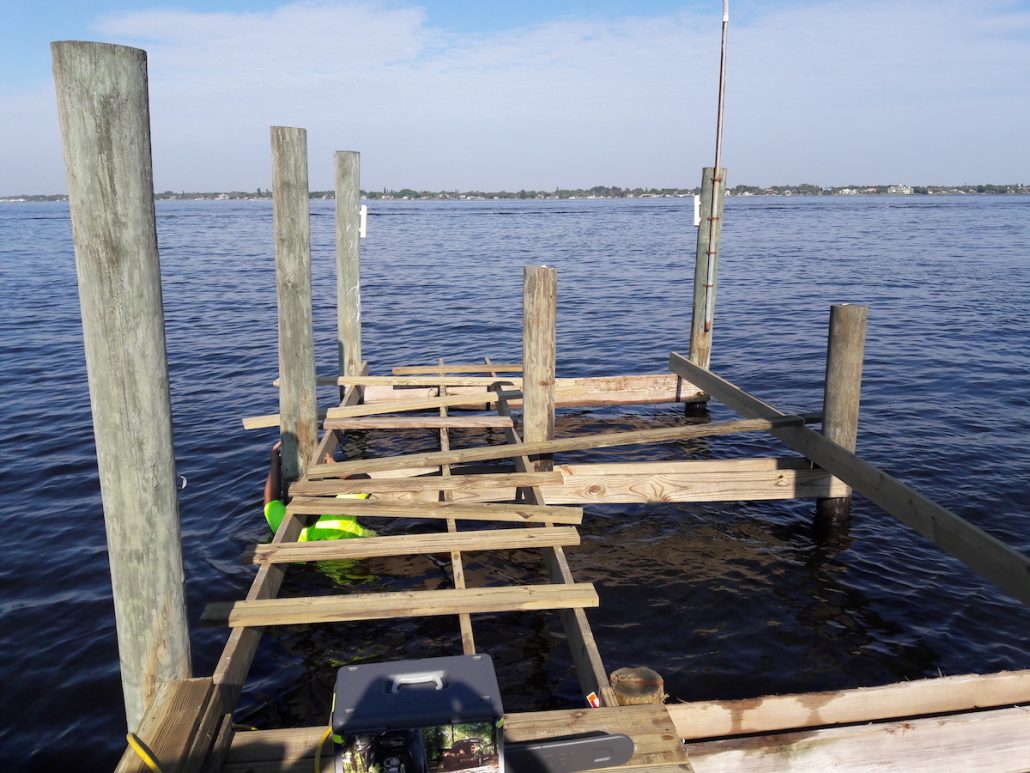How to Choose the Right Service for Your Dock Repairs
Efficient Dock Repair Service Techniques: Making Certain Structural Integrity
Guaranteeing the structural honesty of anchors through efficient repair service techniques is critical for the long life and safety of marine centers. Subsequently, picking the best repair materials, such as corrosion-resistant alloys and composite materials, is important for resilience.
Evaluating Dock Damage
Assessing dock damage is a critical very first action in guaranteeing the architectural honesty and safety of any type of docking center. Key aspects to check out include the dock's structure, pilings, decking, and hardware (Dock Repairs).
Architectural designers or certified assessors usually carry out these analyses making use of specialized methods and tools. Underwater examinations might use sonar tools or from another location operated vehicles (ROVs) to detect immersed damages. Above water, visual assessments are complemented by using moisture meters and other analysis devices to discover underlying problems not immediately noticeable to the nude eye.

Choosing Fixing Products
Selecting the appropriate repair work materials is a pivotal action in the dock reconstruction process, one that directly influences the long life and efficiency of the repaired structure. Product option need to be driven by aspects such as environmental problems, load-bearing needs, and compatibility with existing dock elements.
Along with wood, composite products are increasingly popular due to their durability and reduced upkeep demands. Composites, typically made from a mix of plastic and timber fibers, use exceptional resistance to rot, bugs, and UV damage. For steel anchors, selecting corrosion-resistant alloys such as galvanized steel or marine-grade aluminum is vital to avoid corrosion and ensure architectural integrity in saline water problems.
Epoxy materials and marine-grade sealants are important for repairing cracks and securing joints, supplying a water resistant obstacle and improving the dock's general strength. By meticulously choosing premium products, dock repairs can accomplish durable outcomes, thereby securing versus future destruction and ensuring risk-free, trustworthy usage.
Structural Reinforcement Techniques
Effective structural support strategies are critical in ensuring the security and long life of dock fixings. This approach is specifically reliable for anchors subjected to heavy loads or harsh ecological problems.
Another essential technique is the application of fiber-reinforced polymers (FRP) These materials offer high strength-to-weight ratios and excellent resistance to rust, making them optimal for strengthening wooden or concrete docks. FRP can be applied in sheets or strips and adhered with epoxy materials to boost architectural honesty.
Supporting and securing systems also play a vital function in structural support. Cross-bracing, utilizing metal or wood beam of lights, can combat side pressures, decreasing guiding and activity. Anchoring systems, such as helical piers or driven heaps, supply a steady foundation by moving loads to much deeper, much more secure dirt layers.
Lastly, the assimilation of load-distribution plates can assist disperse weight a lot more evenly throughout the dock's surface, minimizing local stress factors. These techniques jointly guarantee that anchors remain secure and robust, qualified of standing up to the roughness of their functional environment.
Advanced Repair Service Methods

One more sophisticated method includes underwater welding, which permits repair services to be conducted without the requirement to dewater the area. This approach is specifically advantageous for dealing with structural issues in immersed dock parts, guaranteeing minimal disturbance to procedures. Boosted welding methods, combined with robotic systems, supply accuracy and dependability, thus prolonging the life expectancy of the dock.
In addition, cathodic protection systems are implemented to avoid rust in metallic dock structures. By utilizing sacrificial anodes or satisfied present systems, these strategies efficiently mitigate the electrochemical procedures that result in product degeneration.
Last but not least, advanced tracking technologies, such as architectural health and wellness surveillance (SHM) systems, give real-time data websites on the condition of dock frameworks. These systems enable proactive upkeep and prompt interventions, ultimately making sure the long-term structural honesty of the dock.
Maintenance and Avoidance
Upkeep and avoidance are fundamental concepts that underpin the longevity and safety and security of dock frameworks. Regular inspections are extremely important, enabling for early detection of wear and tear, potential weaknesses, and environmental impacts. A proactive technique, including routine look for corrosion, rot, and architectural changes, minimizes expensive repair work and click for more extends the dock's functional life.
Safety nets must include using protective finishings to steel elements to defend against corrosion and using cured timber to withstand decay. Furthermore, ensuring proper drainage and ventilation can avoid water build-up, which is a common reason for structural deterioration. Incorporating high quality products and adhering to maker standards throughout building and repair service stages additionally play critical functions in improving longevity.

Training personnel in dock upkeep best methods makes sure consistent application of safety nets. Leveraging technical advancements, such as drones for examinations and sensors for real-time Continued monitoring, can additionally boost upkeep efforts. By prioritizing upkeep and avoidance, dock proprietors can guarantee architectural integrity, functional safety, and affordable administration over the dock's lifespan.
Verdict
In final thought, maintaining the architectural integrity of marine facilities demands thorough dock repair service methods. Advanced fixing techniques, combined with normal upkeep practices, guarantee the dock stays secure and functional under diverse environmental problems.
Making certain the structural integrity of docks with efficient repair service strategies is paramount for the longevity and safety of marine facilities.Choosing the proper repair service products is a crucial action in the dock reconstruction process, one that directly affects the longevity and performance of the repaired structure.Effective structural reinforcement techniques are vital in making sure the security and durability of dock repair services. By prioritizing maintenance and prevention, dock owners can make certain architectural honesty, functional safety, and cost-effective management over the dock's lifespan.
In conclusion, maintaining the architectural stability of aquatic facilities requires extensive dock repair work techniques.